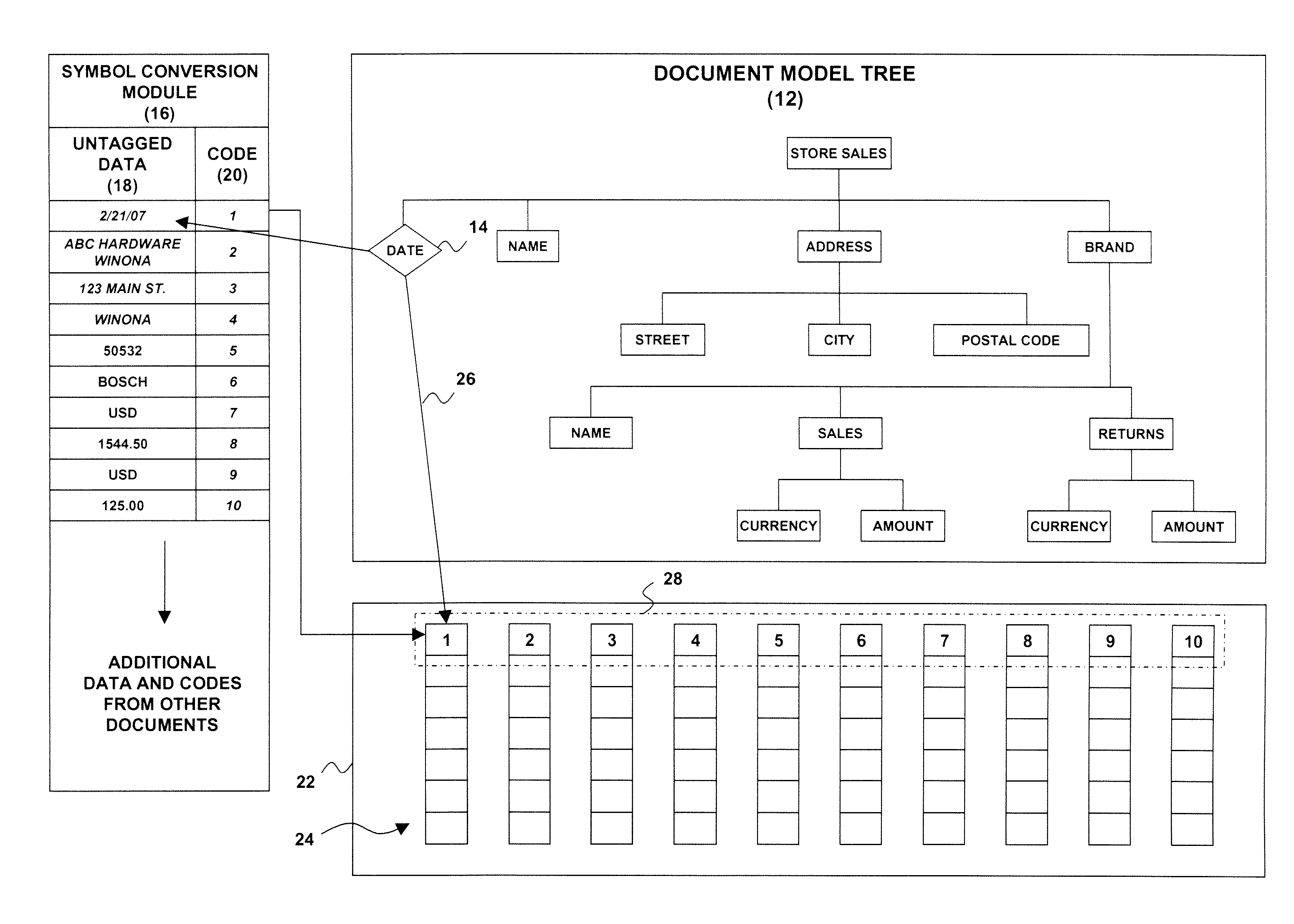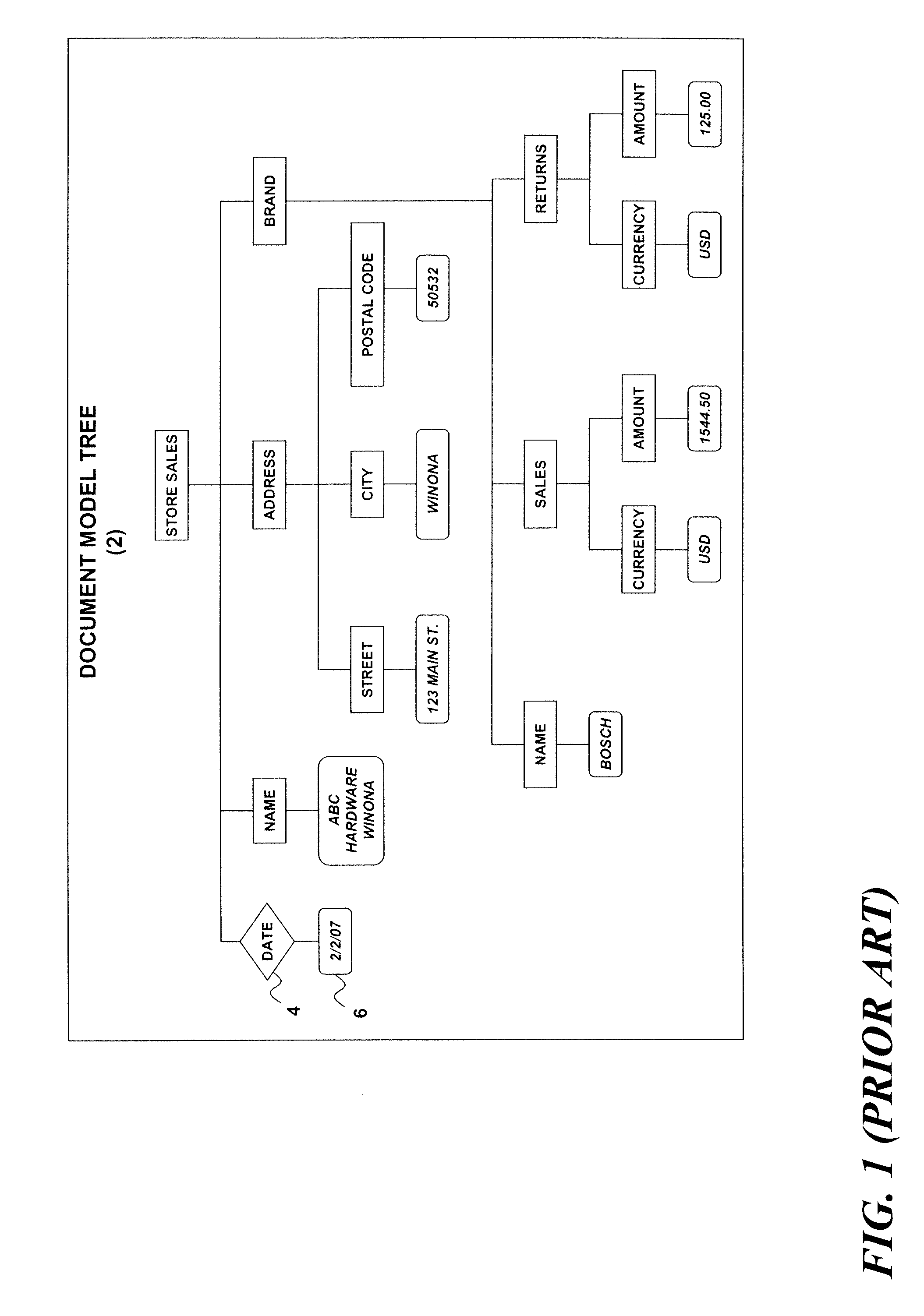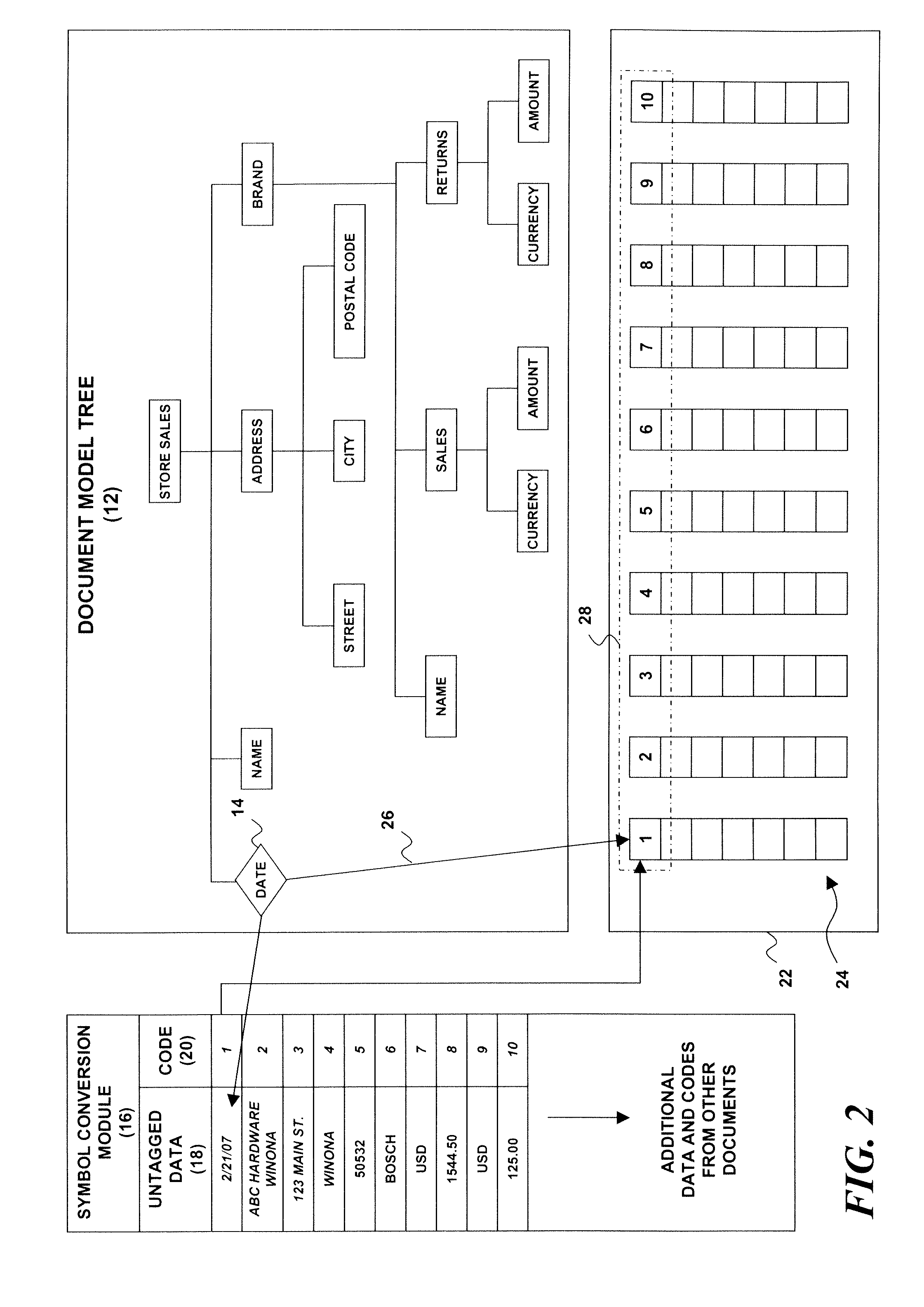System and method for storage, management and automatic indexing of structured documents
a structured document and automatic indexing technology, applied in the field of structured document storage, management and indexing, can solve the problems of no existing single solution or implementation address, complex task of xml-to-relational mapping, and difficulty in scalability and simplicity
- Summary
- Abstract
- Description
- Claims
- Application Information
AI Technical Summary
Benefits of technology
Problems solved by technology
Method used
Image
Examples
Embodiment Construction
Introduction
[0029]Exemplary embodiments of a structured document storage and management system and method will now be described whereby structured documents, such as XML files, are decomposed into a terse data structure that combines data storage and management functions with implicit (automatic) indexing. The terse data format can be used to store any number of structured documents and to provide an automatic index that facilitates rapid data access to arbitrarily selected parts of the structured documents. A number of methods are provided to efficiently navigate the structured documents in order to perform search, insert, update, and delete operations. The structured document data includes a generic document model tree (GDMT) representing the hierarchy of nodes in a set of decomposed documents. A symbol conversion module (SCM) contains untagged data and assigned codes for nodes of the generic document model tree having associated data values. An encoded vector set (EVS) comprises ...
PUM
 Login to View More
Login to View More Abstract
Description
Claims
Application Information
 Login to View More
Login to View More - R&D
- Intellectual Property
- Life Sciences
- Materials
- Tech Scout
- Unparalleled Data Quality
- Higher Quality Content
- 60% Fewer Hallucinations
Browse by: Latest US Patents, China's latest patents, Technical Efficacy Thesaurus, Application Domain, Technology Topic, Popular Technical Reports.
© 2025 PatSnap. All rights reserved.Legal|Privacy policy|Modern Slavery Act Transparency Statement|Sitemap|About US| Contact US: help@patsnap.com



